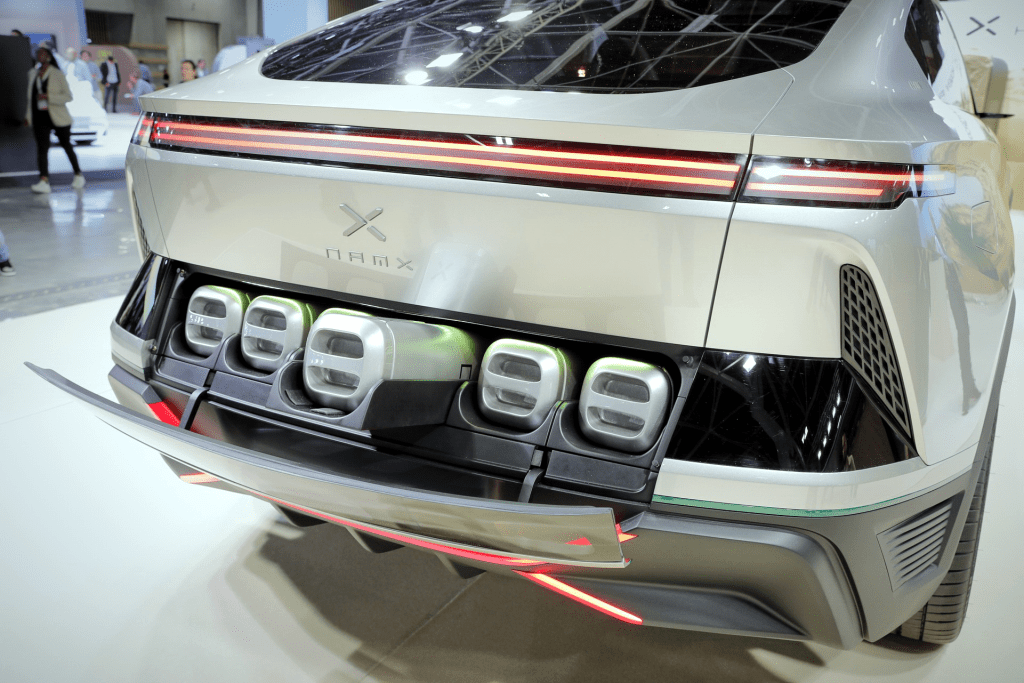

In the context of the global automotive industry facing significant challenges related to environmental protection and reducing the negative impact of emissions, innovations in engine technology are expected to provide breakthrough solutions. One of the most promising technologies in this trend is the hydrogen engine, with hydrogen fuel cell-powered vehicles (FCEVs) leading the way. NamX, a startup company from France, is emerging as a bright star with its promising hydrogen-powered vehicle.
Introduction to NamX
NamX is a newly established automotive company with the goal of developing zero-emission vehicles that protect the environment and promote the shift to renewable energy. Founded by a group of experts in the automotive industry, NamX aims not only to produce fuel-efficient vehicles but also to build a complete ecosystem for hydrogen-powered cars.

NamX Hydrogen-Powered Car Technology
NamX has developed its first hydrogen-powered car, with a standout feature: the use of hydrogen capsules that can be quickly and conveniently replaced, reducing refueling time without the need for a complex charging infrastructure, unlike conventional electric vehicles.

1. Hydrogen Fuel Cell Technology
NamX cars use hydrogen fuel cell technology (Fuel Cell Electric Vehicle – FCEV), a type of electric engine that generates electricity by using hydrogen. When hydrogen reacts with oxygen in the air, a chemical reaction produces electricity, with the only byproducts being water and heat, and no harmful emissions like those from internal combustion engines. This makes hydrogen vehicles not only fuel-efficient but also environmentally friendly.
2. Hydrogen Capsule System
A unique feature of NamX vehicles is the use of hydrogen capsules. These are hydrogen storage tanks that can be easily swapped, allowing users to quickly replace the capsules rather than waiting for long charging times as with electric cars. This system also helps reduce reliance on complex and costly electric vehicle charging infrastructure.
3. Performance and Range
NamX hydrogen-powered vehicles offer an impressive range, capable of traveling up to 800-1,000 kilometers on a single fuel refill. This is a significant advantage over battery electric vehicles, especially in areas with limited charging infrastructure. Additionally, refueling the NamX vehicle takes just 3-5 minutes, addressing the long charging times that electric vehicle users often face.
Benefits of the NamX Hydrogen-Powered Car

- Environmental Protection: The NamX hydrogen-powered car produces zero CO2 emissions, helping to reduce environmental pollution and offering an effective solution to combat climate change.
- Cost Efficiency: While the production cost of hydrogen vehicles is still high, the price of hydrogen fuel is expected to decrease in the future, making it more cost-effective to operate compared to internal combustion engine vehicles.
- Convenience: The quick and easy hydrogen capsule replacement system saves time and eliminates the concerns about finding charging stations as with electric cars.
Challenges and Prospects
Although the NamX hydrogen-powered vehicle has garnered significant attention from experts and consumers alike, there are still some challenges the company needs to overcome. The hydrogen refueling infrastructure remains limited, making widespread adoption of hydrogen vehicles difficult. Additionally, the cost of hydrogen production and the logistics of fuel transportation are still facing challenges in terms of efficiency and cost-effectiveness.
However, with the rapid advancement of technology and support from governments worldwide in promoting green transportation solutions, NamX’s hydrogen-powered vehicle could become an integral part of the automotive industry’s green revolution in the years to come.
Conclusion
The NamX hydrogen-powered car is an important step forward in the development of sustainable, environmentally friendly transportation. With its superior benefits in terms of performance, range, and environmental impact, this product could play a significant role in reducing pollution and moving toward a greener transportation future. However, building the necessary infrastructure and reducing production costs remain key challenges that need to be addressed for hydrogen-powered vehicles to become a mainstream solution for consumers.
Để lại một phản hồi